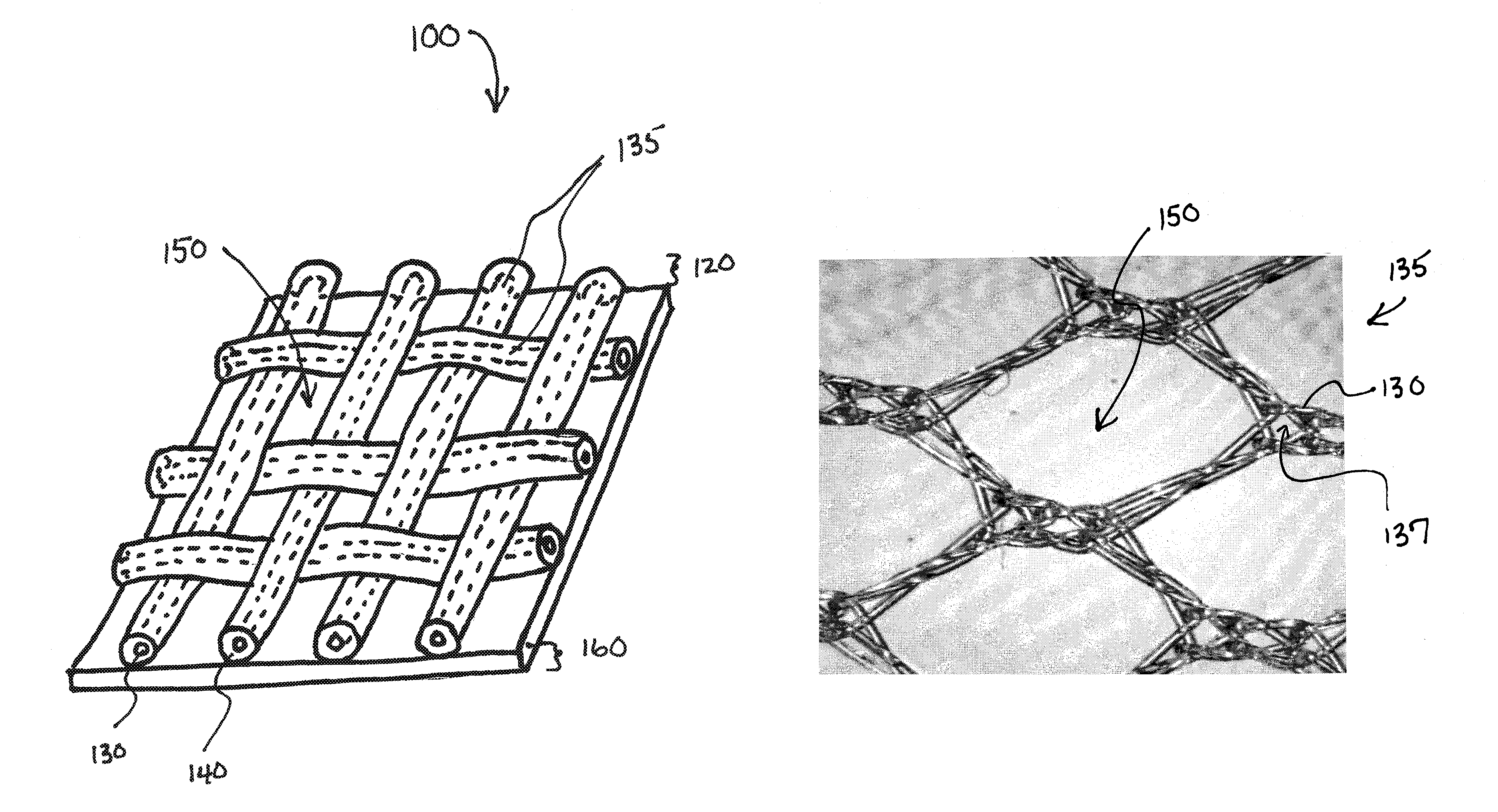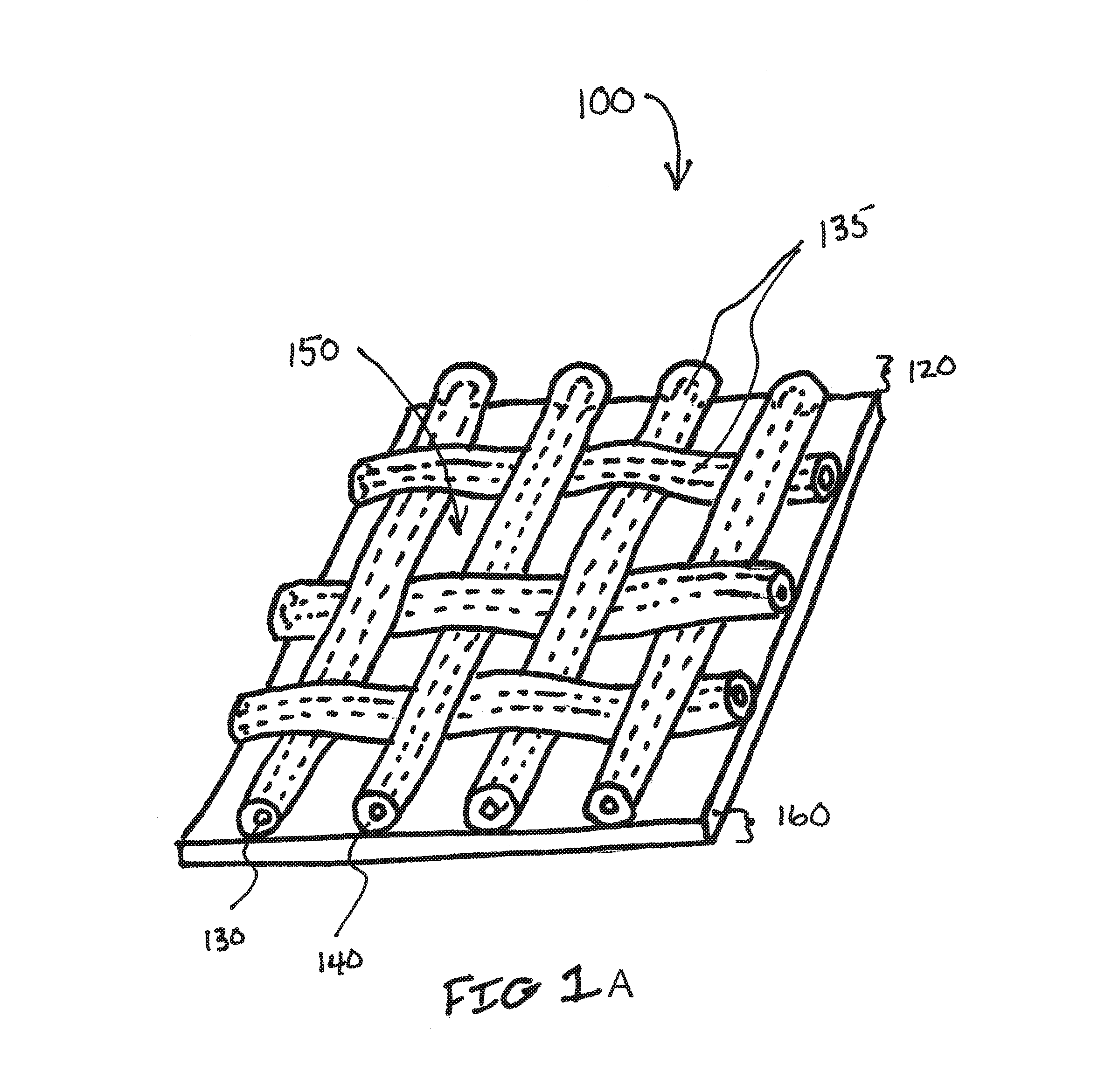Apparatus and method for limiting surgical adhesions
a surgical adhesion and applicator technology, applied in the field of applicable composite prosthesis, can solve the problems of mesh removal, intestinal fistulization, and mesh alone cannot be used to reinforce the abdominal wall or repair abdominal wall defects, and achieve the effect of limiting the incidence of postoperative adhesions
- Summary
- Abstract
- Description
- Claims
- Application Information
AI Technical Summary
Benefits of technology
Problems solved by technology
Method used
Image
Examples
Embodiment Construction
[0048]While this invention is capable of being implemented in many different embodiments, there is shown in the drawings, and will herein be described in detail, several specific embodiments, with the understanding that the present disclosure can be considered as an exemplification of the principles of the invention and is not intended to limit the invention to the embodiments illustrated.
[0049]The invention will be described by way of example in relation to a composite prosthesis intended for use in parietal surgery, in the repair of eventrations or hernias. These descriptions are used as examples of embodiments and use of these embodiments of the invention and are not intended to limit embodiments or uses.
The Apparatus:
[0050]Referring to FIG. 1A, the composite prosthesis 100 for limiting the incidence of postoperative adhesions includes a tissue infiltratable mesh 135 comprising one or more fibers 130 coated with a biocompatible coating 140 creating a coated mesh 120. The coated m...
PUM
| Property | Measurement | Unit |
|---|---|---|
| wt. % | aaaaa | aaaaa |
| pore size | aaaaa | aaaaa |
| thickness | aaaaa | aaaaa |
Abstract
Description
Claims
Application Information
 Login to View More
Login to View More - R&D
- Intellectual Property
- Life Sciences
- Materials
- Tech Scout
- Unparalleled Data Quality
- Higher Quality Content
- 60% Fewer Hallucinations
Browse by: Latest US Patents, China's latest patents, Technical Efficacy Thesaurus, Application Domain, Technology Topic, Popular Technical Reports.
© 2025 PatSnap. All rights reserved.Legal|Privacy policy|Modern Slavery Act Transparency Statement|Sitemap|About US| Contact US: help@patsnap.com



